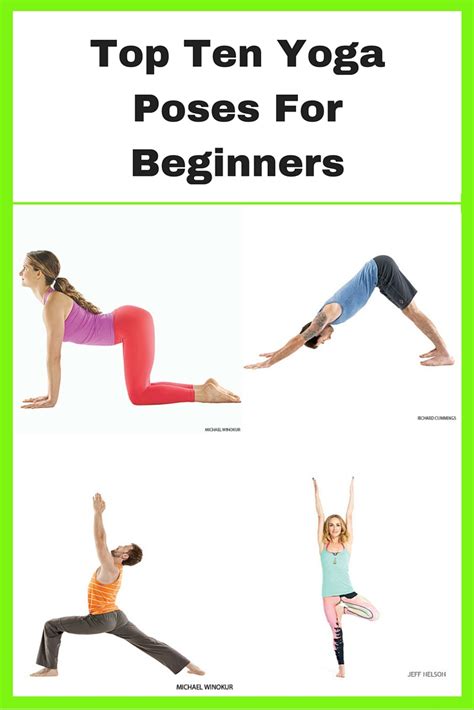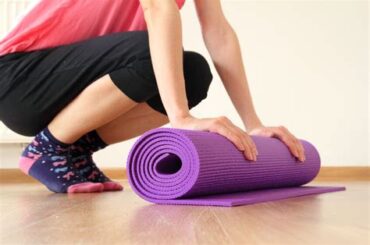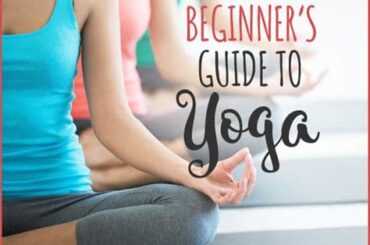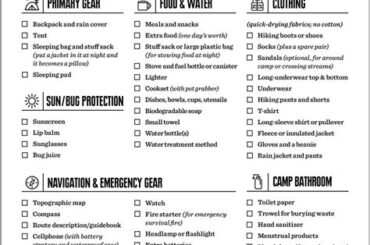Introduction to Yoga for Beginners
Yoga, an ancient practice that originated in India, has gained immense popularity in recent years for its numerous physical and mental health benefits. It is a holistic discipline that combines physical postures, breathing techniques, and meditation to promote overall well-being. If you are a beginner looking to embark on your yoga journey, this blog post will serve as a comprehensive introduction to yoga for beginners.
One of the key benefits of yoga for beginners is its ability to improve flexibility and strength. Regular practice of yoga postures, also known as asanas, can help stretch and tone your muscles, improve your posture, and increase your range of motion. Moreover, yoga is a low-impact exercise that puts minimal strain on your joints, making it accessible to people of all fitness levels.
Aside from its physical benefits, yoga also provides numerous mental and emotional advantages. The practice of deep breathing and mindful meditation in yoga helps to reduce stress, anxiety, and depression. By focusing on your breath and being present in the moment, yoga can help calm your mind, improve your concentration, and bring a sense of inner peace and balance.
To start your yoga journey, it is important to make necessary preparations to create a positive and safe practice environment. Find a quiet space in your home where you can practice without distractions. Get yourself a yoga mat, comfortable clothing, and any additional props such as blocks or straps. Ensure that you have enough space to move freely and that the temperature of the room is comfortable for you.
As a beginner, it is advisable to start with basic standing yoga poses. Standing poses like Mountain Pose (Tadasana) and Warrior Pose (Virabhadrasana) help build strength, improve posture, and increase body awareness. These poses also serve as a foundation for more advanced postures and sequences. Take your time and focus on proper alignment and breathing as you explore these fundamental poses.
Lastly, simple seated and supine yoga poses are excellent for beginners to relax and unwind. Poses like Child’s Pose (Balasana) and Corpse Pose (Savasana) allow you to release tension, calm your mind, and restore your energy. These poses are typically practiced at the end of a yoga session to promote relaxation and prepare for meditation.
In conclusion, as a beginner, yoga offers a wonderful opportunity to embark on a journey of self-discovery and self-improvement. It is a practice that not only strengthens and enhances the physical body but also nourishes the mind and soul. By starting with the basics, creating a suitable environment, and exploring various poses, you can gradually cultivate a fulfilling and transformative yoga practice.
Benefits of Yoga for Beginners
Yoga has gained immense popularity in recent years, and for good reason. Not only is it a great form of exercise, but it also offers a wide range of benefits for beginners. If you’re considering starting a yoga practice, you’ll be pleased to know that there are numerous advantages that await. From physical improvements to mental and emotional well-being, yoga has the power to transform your life in more ways than one.
One of the key benefits of yoga for beginners is its ability to improve flexibility and strength. Through regular practice, you’ll gradually notice an increase in your range of motion as well as enhanced muscle tone. This is particularly important for those who have sedentary lifestyles or spend long hours sitting at a desk. Yoga helps to stretch and lengthen the muscles, improving posture and reducing the risk of injury.
Another advantage of yoga for beginners is stress reduction. In today’s fast-paced world, stress is a common issue that many of us face. Yoga provides a sanctuary from the chaos of daily life, allowing you to calm your mind and find inner peace. By focusing on your breath and performing the various poses, you’ll experience a sense of mindfulness and relaxation. This can help to alleviate anxiety and promote mental clarity.
- Improved balance: As a beginner practicing yoga, you’ll work on your balance. This is especially beneficial for older individuals who may be at risk of falls.
- Better sleep: Yoga promotes relaxation and stress reduction, which can lead to improved sleep quality and duration.
- Increased energy: Regular yoga practice boosts energy levels and helps to combat fatigue and lethargy.
Additionally, yoga helps to build body awareness and cultivate a positive body image. It encourages self-acceptance and self-care, allowing you to appreciate your body for what it is capable of rather than how it looks. This can have a profound impact on your self-esteem and overall well-being.
| Physical benefits | Mental benefits |
|---|---|
| Increased flexibility | Stress reduction |
| Improved strength and muscle tone | Enhanced mental clarity |
| Better posture | Improved concentration |
| Enhanced balance | Increased self-awareness |
In conclusion, there are numerous benefits of yoga for beginners. From physical improvements to mental and emotional well-being, yoga has the power to enhance your overall quality of life. Whether you’re looking to improve flexibility, reduce stress, or increase self-awareness, starting a yoga practice can be a transformative journey. So roll out your mat and reap the rewards that yoga has to offer.
Important Preparations for Yoga Practice
Before you begin your yoga practice, it’s important to take some time to prepare yourself both mentally and physically. These preparations will help you get the most out of your yoga session and minimize the risk of injuries. Here are some important preparations you should consider before starting your yoga practice:
1. Clear your space: Find a quiet and clutter-free area in your home where you can practice yoga. Remove any obstacles or distractions that may interfere with your concentration or movements.
2. Gather your props: Depending on the type of yoga you’re practicing, you may need some props to support your practice. This could include a yoga mat, yoga blocks, straps, or blankets. Gather all the props you may need and have them nearby for easy access during your practice.
3. Dress comfortably: Wear lightweight, comfortable clothing that allows for easy movement. Make sure your clothes are not too tight or restrictive, as this can hinder your yoga practice. Opt for breathable materials that wick away moisture to keep you cool and comfortable.
4. Warm-up your body: Before diving into your yoga practice, warm up your body to prepare it for the movements and stretches you will be doing. This can be as simple as a few minutes of gentle stretches or some light cardio exercises to get your blood flowing.
5. Hydrate yourself: It’s important to stay hydrated throughout your yoga practice. Make sure to drink enough water before, during, and after your session to keep your body properly hydrated. This will not only help you maintain energy levels but also aid in flushing out toxins from your body.
6. Set an intention: Take a moment to set an intention for your yoga practice. Whether it’s cultivating mindfulness, finding inner peace, or simply improving flexibility, having a clear intention will help you stay focused and motivated throughout your practice.
7. Listen to your body: One of the most important preparations for yoga practice is to listen to your body. Pay attention to how you’re feeling physically and emotionally, and honor any limitations or discomfort that arises. Remember that yoga is a personal practice, and it’s essential to respect and honor your body’s needs.
By taking these important preparations before your yoga practice, you’ll create a safe and supportive environment for your body and mind to thrive. Remember that yoga is a journey, and it’s important to approach it with patience, self-compassion, and a willingness to explore your inner self.
Basic Standing Yoga Poses for Beginners
When starting a yoga practice, it is important to begin with the basic standing yoga poses. These poses not only help to build strength and improve flexibility, but they also provide a solid foundation for more advanced poses in the future. In this blog post, we will explore some of the most common and beneficial standing yoga poses for beginners.
1. Tadasana (Mountain Pose): This is the foundation for all standing poses in yoga. Stand with your feet together, grounding through all four corners of your feet. Relax your shoulders, lengthen your spine, and engage your core. This pose improves posture and balance.
2. Virabhadrasana I (Warrior I Pose): From Tadasana, step your left foot back and turn it out at a 45-degree angle. Bend your right knee, keeping it stacked above your ankle. Raise your arms overhead, palms facing each other. This pose strengthens the legs and opens the hips.
3. Utthita Trikonasana (Extended Triangle Pose): Stand with your feet wide apart. Turn your right foot out at a 90-degree angle and your left foot slightly in. Reach your right hand towards your right leg, keeping your spine long. Extend your left arm towards the ceiling. This pose stretches the legs, hips, and side body.
| Benefits of Basic Standing Yoga Poses for Beginners: |
|---|
| 1. Improves strength and flexibility |
| 2. Enhances posture and balance |
| 3. Increases focus and concentration |
| 4. Builds core stability |
By practicing these basic standing yoga poses regularly, beginners can gradually develop a strong yoga foundation. It is essential to listen to your body and not push beyond your limits. Remember to breathe deeply and focus on proper alignment to maximize the benefits of each pose. With time and practice, you will be able to progress to more challenging standing poses and deepen your yoga practice.
Simple Seated and Supine Yoga Poses for Beginners
Yoga is an ancient practice that has gained immense popularity in recent years. It offers numerous health benefits, both physical and mental. For beginners, it is important to start with simple seated and supine yoga poses that are gentle on the body and easy to follow. These poses help in improving flexibility, promoting relaxation, and reducing stress. In this blog post, we will explore some of the simple seated and supine yoga poses that are perfect for beginners.
Seated Forward Fold (Paschimottanasana): This pose stretches the hamstrings and lower back, promoting flexibility and releasing tension. To perform this pose, sit on the mat with your legs extended in front of you. Inhale and lengthen your spine, then exhale and hinge forward from the hips, reaching your hands towards your feet. Keep your back straight and avoid rounding your spine. Hold this pose for a few breaths and gradually increase the duration as you become more comfortable.
Supine Spinal Twist (Supta Matsyendrasana): This pose helps in relieving lower back pain and improving spinal mobility. To practice this pose, lie on your back with your legs extended. Bend your right knee and bring it towards your chest. Cross your right leg over the left side of your body and extend your right arm out to the side, keeping your shoulders grounded. Gently twist your torso to the left, allowing your right shoulder to come closer to the ground. Hold this pose for a few breaths and repeat on the other side.
Bridge Pose (Setu Bandhasana): This pose strengthens the back, buttocks, and thighs, while also stretching the chest and neck. Lie on your back with your knees bent and feet flat on the mat, hip-width apart. Place your arms alongside your body, palms facing down. Inhale and lift your hips off the mat, pressing your feet and arms into the ground. Engage your core and thighs to lift the hips higher. Hold the pose for a few breaths and slowly lower your hips back down.
Practicing these simple seated and supine yoga poses regularly can help beginners build a strong foundation and prepare their bodies for more advanced poses. Remember to listen to your body and never push yourself beyond your limits. With time and consistent practice, you will gradually progress and unlock the benefits of yoga.
Frequently Asked Questions
What are the benefits of practicing yoga for beginners?
Practicing yoga offers various benefits for beginners, including increased flexibility, improved strength and balance, reduced stress and anxiety, enhanced mental clarity and focus, improved posture, and better sleep quality.
What are some important preparations to consider before starting a yoga practice?
Before starting a yoga practice, it is important to consult with a healthcare professional, especially if you have any medical conditions or injuries. Additionally, it is recommended to wear comfortable clothing, have a yoga mat, bring a water bottle, and create a quiet and peaceful practice space.
What are some basic standing yoga poses that are suitable for beginners?
Some basic standing yoga poses that are suitable for beginners include Mountain Pose (Tadasana), Warrior I (Virabhadrasana I), Tree Pose (Vrksasana), and Triangle Pose (Trikonasana).
What are some simple seated and supine yoga poses that beginners can try?
Beginners can try simple seated and supine yoga poses such as Child’s Pose (Balasana), Seated Forward Bend (Paschimottanasana), Bridge Pose (Setu Bandhasana), and Corpse Pose (Savasana).
How long should a beginner practice yoga each day?
As a beginner, it is recommended to start with shorter practice sessions, such as 15-20 minutes per day, and gradually increase the duration as you become more comfortable and experienced.
Can yoga help with weight loss for beginners?
While yoga is not primarily focused on weight loss, it can aid in weight management by increasing overall physical activity, improving body awareness, promoting mindfulness in eating habits, and reducing stress-related eating.
Is it necessary to have a yoga teacher for beginners?
Having a yoga teacher or instructor can be beneficial for beginners as they can guide and correct your alignment, provide modifications for individual needs, and offer personalized advice and support. However, with the availability of online tutorials and resources, it is also possible to practice yoga at home with proper guidance and caution.





